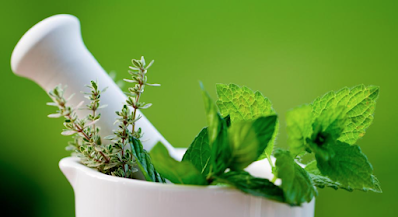Herbal Medicine for Blood Purification
If you're looking for herbal medicine for blood purification, you've come to the right place. In this article, you'll learn about the most popular plants used in this procedure, including Neem, Manjistha, Amla, and Wheatgrass juice. However, if you'd like more information, read on. Listed below are some of the benefits of these plants for the human body. Listed below is a brief description of their medicinal properties.
Neem
There are many health benefits of neem, and the herb is often prescribed for a variety of ailments. You can buy neem supplements at health food stores or online, but it is important to know that there are no dietary guidelines for its use. You should also check the label of the supplement you choose to ensure that it is safe. Neem supplements are not regulated by the FDA, and the amount of neem in them is not uniform.
The leaves are bitter, but the flowers are edible and have incredible therapeutic properties. Known as vepampoo in Tamil, the flowers of neem are used in many Indian recipes. They enhance the taste of food and aid digestion. They are also used to relieve tiredness and anorexia. These herbs are also helpful in treating wounds and blood purification. A recent study has shown that neem can improve a person's health by boosting the immune system.
Manjistha
The main benefits of Manjistha herbal medicine for blood purification are numerous. It improves your overall health by supporting your lymphatic system. The Lymphatic system is responsible for draining toxins from the body and maintaining a healthy immune system. Muscle contractions move lymph through the body, and sedentary muscles produce toxins in the tissues. This toxins affect energy levels, the appearance of your skin, and many health conditions. Manjistha provides your cells with nutrition and helps them detoxify.
PMS, which is often accompanied by mood swings, is a common complaint in women. Manjistha reduces symptoms of PMS and increases Dopamine levels in the blood, which regulates brain activity. In addition to its beneficial effect on mood swings, Manjistha has nootropic and anti-stress properties. It is also an excellent face pack for cooling your skin and improving your overall health.
Amla
Amla is a small green pulpy fruit with high antioxidant levels. It is also known as the gooseberry or usirikaya in Telugu and Nellika in Tamil. It is considered a 'divine medicine' in Ayurveda, where it is recommended to eat a few pieces daily. This fruit is rich in Vitamin C, calcium, iron, phosphorus, carotene, and fibre. Hence, it can be used in various forms, including juice, pickles, churna, and supplements.
The Government of India has framed policies for rare medicinal plants, and in the commercial formulations of CP, eight rare herbs are missing. Substitute herbs are being used in its place. The four Ashtavarga herbs, which are related to the gingers and orchid families, augment the antioxidant activity of Amla. These plants, however, are sometimes substituted or adulterated due to confusion in vernacular names and the absence of chemical markers.
Wheatgrass juice
Although there are several other dietary supplements available to treat blood disorders, wheatgrass juice has many advantages over other herbal medications. It is inexpensive and free of side effects, and contains plenty of antioxidants. This plant is a young grass from the common wheat plant, and because of its high chlorophyll content, is often referred to as "green blood". Its high chlorophyll content results in an excellent oxygen supply to all tissues. Wheatgrass contains two important enzymes, superoxide dismutase and cytochrome oxidase, which protect against oxidative DNA damage.
Another benefit is that wheatgrass juice is a natural blood builder. It also has strong detergent properties, and is believed to help the lymphatic system drain. By improving the flow of blood, wheatgrass juice can reduce uric acid. Other benefits include lowering blood pressure and helping the body rid itself of harmful chemicals. But wheatgrass juice should be consumed only with the guidance of a doctor. And because wheatgrass contains a high level of chlorophyll, it is considered a safe drink.
Cymbopogon citratus
In its native South India and SriLanka, the herb Cymbopogon citratus is used in a variety of traditional medicines, both modern and folk, for its antibacterial, antifungal, and antibacterial properties. It also contains flavonoids, phenolic compounds, terpenoids, and essential oils. These compounds, along with the healing properties of lemongrass, are the key components of this herbal medicine.
The leaves of Cymbopogon citratus are thin, long, and needle-like. They are 1.3-2.5 cm long, with loose tips and a fragrant citrus aroma when crushed. The entire plant is 18-36 cm tall, with parallel venation and showy fall characteristics. It grows in clumps. Cymbopogon citratus is a perennial herb found in many different parts of the world.
Delonix elata
Delonix elata, commonly referred to as white gulmohur, is a plant that belongs to the family Fabaceae and the Caesalpinoideae. Although it is not a classical Ayurvedic drug, it was included in the Shodala Nighantu during the 12th century AD. In villages, it is known to relieve rheumatic symptoms, including pain and stiffness in joints.
Another herb used in herbal medicine for blood purification is Citronella recutita L., which contains citral, an aromatic compound. This plant has been used in various human therapies for centuries for its citral content, and has been found to suppress the expression of cancer cells. In addition to its blood purification capabilities, Delonix elata has significant antioxidant activity, which helps prevent the formation of cancer cells. The plant is also antimicrobial, which makes it an excellent choice for skin kharish ka ilaj




Comments
Post a Comment